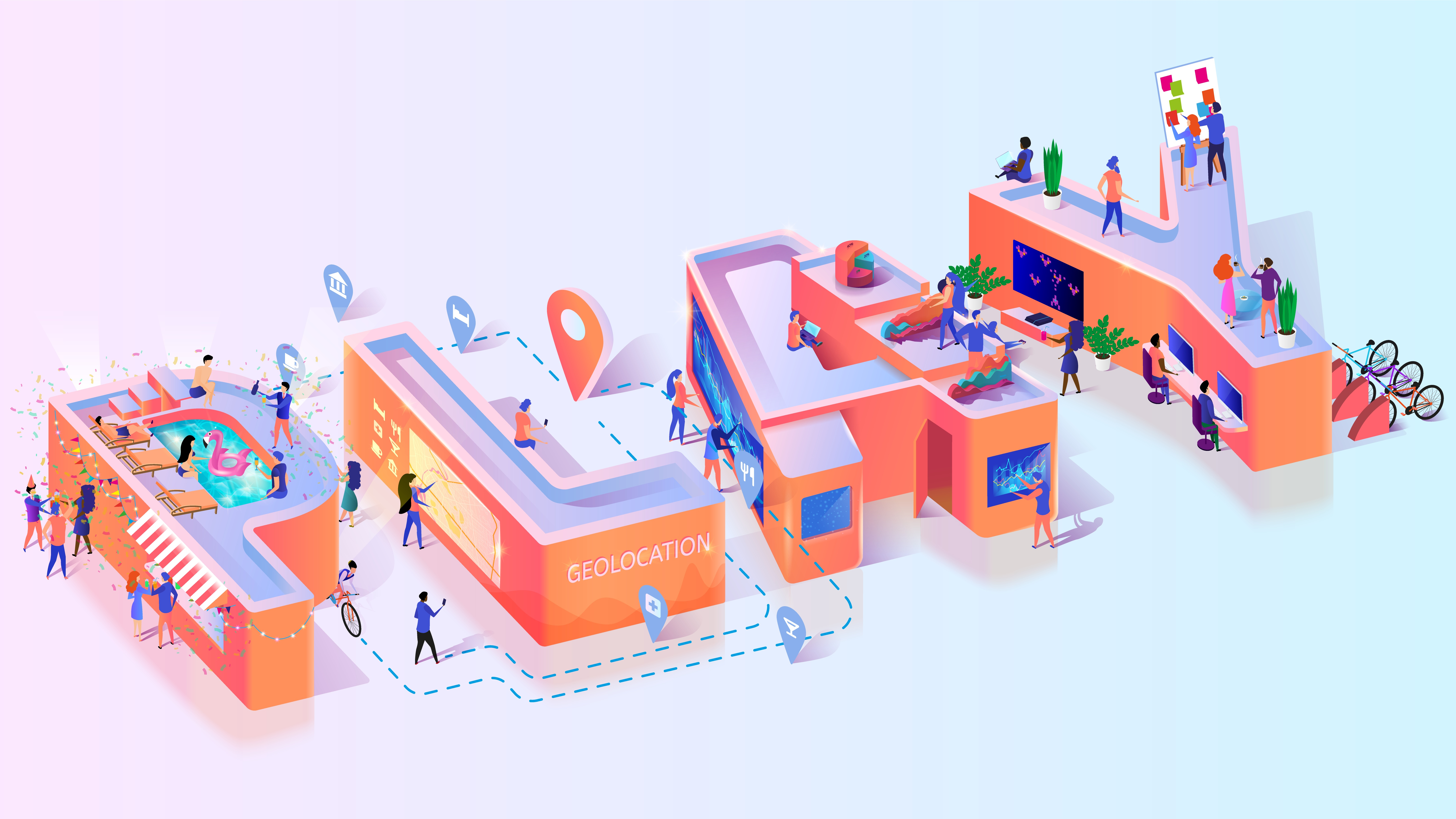Gamify your business growth
Gamification has continued to expand and evolve. Today, your business can gamify many processes and reap the rewards


According to the latest gamification report from One4All, nearly half (48%) of businesses now use some form of gamification across their enterprises.
The most common use of gamification is to encourage workforces to hit targets such as sales. Over a third (35%) of respondents to the survey stated a reward would motivate them most, suggesting the anticipation of an imminent surprise holds more value to staff than the prospect of achieving a long-term goal, such as a sales target.
Not to be confused with game theory, gamification uses the principles of gaming to encourage an outcome, which is then rewarded. Using gamification in a business context has become quite common in the creative industries, but now other verticals are starting to catch onto the benefits as well.
Introducing an element of competition and fun into a workplace process can have a tangible positive impact. This was seen decades ago when reward schemes became highly popular.
As gaming technology has developed, and become more widespread thanks to social media, gamification can now be personalised and become an engaging social activity. In 2018, 85% of people said they’d spend more time on an app or software because of gamification elements, according to the latest survey from TalentLMS.
This year, the number has grown by 4%
For example, the Nike+ app that lets users track their personal running goals saw Nike+ membership jump by 40%. As a direct result of this gamification initiative, the company saw a 30% increase in revenue. Practical examples like this also tap into Generation Y's propensity to play games.
Get the ITPro daily newsletter
Sign up today and you will receive a free copy of our Future Focus 2025 report - the leading guidance on AI, cybersecurity and other IT challenges as per 700+ senior executives
Another clear application of gamification is within HR. With wellbeing and mental health now at the top of the business agenda, gamification can be used to promote wellbeing across a business.
Gamification can have a positive impact, reinforcing team membership and promoting loyalty, which can see reductions in staff turnover. These elements then feed into increased productivity. The State of the Global Workplace report revealed 85% of employees are not engaged at work. Gamification can be a way to change that worrying statistic.
“Across all sectors, gamification can help businesses shake up outdated perceptions and deliver more engaging experiences to a business’ users or customers,” Kerim Derhalli, creator of Invstr, an app that uses gamification to get people into trading, tells IT Pro. “People can learn and develop new skills more effectively when they are enjoying themselves and embracing competition with their peers, friends or colleagues. Don’t lose sight of this. Embracing competition and unleashing an individual’s natural desire to win can help drive profits and growth.”
Choose your game
Implementing gamification in your business will require an understanding of the goals you want to achieve, and what kind of gaming mechanics your staff will find engaging.
Excellent communication is essential to ensuring members of staff clearly understand how the system works – especially what they have to do to win the stated rewards. Some form of online tracking portal where participants can see their progress could reinforce the gamification tracking element of the scheme.
Using apps within a business context is now commonplace. Gamification and apps can go hand-in-hand. Pete Eyre, Managing Director of customer and audience engagement platform Vevox, explains: "Gamification has to be integrated into apps in the right way, it has to be meaningful and linked with real-world development. If gamification becomes a novelty or is not linked to a goal outside the app it becomes ineffective.
“In the workplace, you have to have gamification connected to a business objective, whether it is personal development or business KPIs. To ensure the rewards in the app accurately mirror real-world business goals, developers must be given regular exposure to the end-user, so they are immersed in the real application of the product.”
Gamification can also be applied to your broader business activity. Using games to engage with a customer base is a technique that has been developing for several years. Glenn Lehrman, Vice President of Wish outlines how games can become a highly lucrative component of your business’s marketing.
“When gamifying a business, it is essential to ground the strategy in a genuine purpose, rather than to boost revenue. In this way, businesses can command greater success in their strategy as it will speak to the target audience in a way that seems genuine,” he says.
“Using the example of Wish, our whole platform is driven by the desire to 'Make Shopping Fun.' We strive to solve the problem of a boring shopping experience that results from solely focusing on the end transaction rather than the browsing experience. Gamification aligns perfectly with this mission to redesign the way we shop to make it fun again for everyone.”
Using gaming mechanics within your company and as a channel to connect with customers is proven. Games are now so ingrained into the lives of consumers. Using gamification is a logical and welcome addition to their interactions with businesses and brands.
Developing your business
The future of gamification will see the technique becoming more embedded in the strategic planning of all businesses. Moving away from simply being based on technology, gamification will evolve to empower people to expand their capabilities autonomously, without the need to entice or reward them, which is the current basis for gamification.
One of the first questions business leaders ask is whether gamification boosts productivity. The research from TalentLMS would indicate it does, with 89% of respondents stating that when a task is gamified, they feel competitive and want to complete it. What’s more, 99% of respondents stated that if their job had more gamification elements, they would be more productive.
Speaking to IT Pro, Nick Rosier, Digital and Content Director at 2Heads explains: “Gamification can support business development if done in the right way and more often than not, technology plays a central role. For example, when we build a meaningful experience for our own clients, be it Bombardier’s luxury jet launch in Las Vegas, or Disney’s B2B activation at the international media fair MIPCOM at the Cannes Palais, we harness creative tech to create a ‘game’ element.”
Is the future of your business dependent on introducing elements of gaming everywhere? Not necessarily. It is essential to understand your motivations for using gamification: Goals should be clearly defined to ensure the game elements are structured to deliver the outcomes you want and deliver good ROI.
“As the line between social media and e-commerce blurs, we certainly expect the trend of gamification to continue gaining traction,” concludes Wish’s Glenn Lehrman. “With Generation Z set to emerge as the largest pool of consumers, gamification will provide businesses with a valuable tool to satisfy this audience’s calls for memorable and meaningful experiences. As such, I expect we’ll see the integration of this tactic across a greater number of companies that extends beyond the confines of the retail space.”
From HR to marketing, gamification can be applied to a diverse range of business processes. Engaging workers via a gaming mechanism is one tangible way to improve efficiency, but also, reinforce loyalty, as well as having some fun.
Placed within a well-defined strategy, gamification could offer your business an innovative channel to transform how your workforce collaborates. And in the wider marketplace, games are increasingly being used as core marketing tools. Playing games, it seems, offers multiple advantages all businesses can take advantage of
David Howell is a freelance writer, journalist, broadcaster and content creator helping enterprises communicate.
Focussing on business and technology, he has a particular interest in how enterprises are using technology to connect with their customers using AI, VR and mobile innovation.
His work over the past 30 years has appeared in the national press and a diverse range of business and technology publications. You can follow David on LinkedIn.
-
 Should AI PCs be part of your next hardware refresh?
Should AI PCs be part of your next hardware refresh?AI PCs are fast becoming a business staple and a surefire way to future-proof your business
By Bobby Hellard Published
-
 Westcon-Comstor and Vectra AI launch brace of new channel initiatives
Westcon-Comstor and Vectra AI launch brace of new channel initiativesNews Westcon-Comstor and Vectra AI have announced the launch of two new channel growth initiatives focused on the managed security service provider (MSSP) space and AWS Marketplace.
By Daniel Todd Published